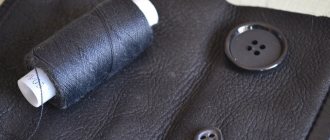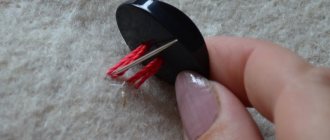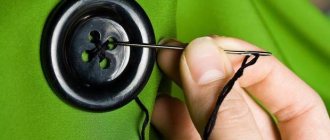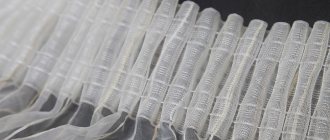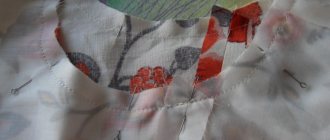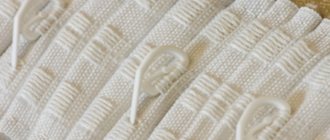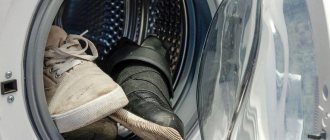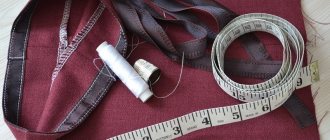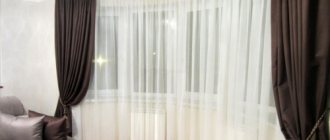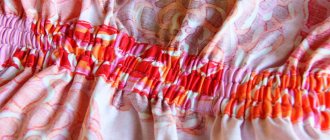How to sew ribbons to pointe shoes
If you look at the ballerina’s legs, you will see not only pointe shoes on them, but also satin ribbons that gracefully cover the ankles and lower legs.
However, this is not at all a tribute to tradition or beauty: the ribbons are necessary to ensure that the pointe shoes do not come off the foot. Reliable fixation allows you to achieve clarity of movement and avoid foot injuries. Any dancer knows how important it is to properly sew ribbons onto pointe shoes, because the health of the legs and their comfort depend on this.
Pointe shoe tape length
Pointe shoes are sold without ribbons for a reason. The fact is that each foot is individual, it has a different instep, length, etc. If you add the location of the ribbons to the number of parameters by which pointe shoes are selected, then the purchase will turn into an extremely difficult task.
As a rule, the color of the ties matches the color of the leggings. Ribbons are a strip of durable satin with a width of 2.5 to 3-4 cm. Narrower ribbons will cut into the legs during dancing and cause pain. Too wide ones look bulky and can hinder movement. If we talk about the length, then two to two and a half meters is enough for both shoes.
To sew on these ties you will need:
- scissors;
- pencil;
- matches or lighter;
- needle and thread.
First of all, we divide the tape into four parts: two for each leg. To do this, you can fold it in half, cut it and repeat the procedure for each half again. Along the edges of the cut, the satin must be scorched with a lighter or match so that the ends do not unravel and last longer.
Now the most important thing is to determine the place where the tape will be sewn and at what angle. To do this, you need to bend the heel towards the toe (it is soft, this is not difficult to do) and use a pencil to mark the place of the bend and its angle. Sometimes the right and left pointe shoes are immediately signed so as not to be confused, because the new ballet shoes are the same.
Check the length of the ribbons - it should be equal to the distance from the knee to the heel - turn it in 1 cm and position it so that the rough side goes towards the leg and the shiny side goes out. If you mix it up, the ties will slip off your leg.
Now online dance stores sell special threads for pointe shoes, but just thin but strong cotton threads will do.
Carefully insert small stitches, covering the entire layer of lining. Try not to show them on the front side of the pointe shoes. When finished, make sure the ribbons are sewn securely. Try on the shoe and tie the ribbons, checking how they go towards the ankle.
Alternatively, you can try pinning the ribbons with a safety pin and, before you even sew them on, try tying them and assess the placement.
When the leg is raised high, a wide elastic band is sometimes additionally sewn across it for better fixation.
We talked about how to sew ribbons to pointe shoes, but with experience, each dancer has her own ideas about how to do it best.
“Ballerinas against Grishko. Questions and answers"
When I was writing a post about Grishko shoes, I looked at their website and came across the section “Questions and Answers” - Grishko Frequently Asked Questions.
It became very curious. I was shocked by some of the answers, because the answers to some questions seemed absurd to me.
Let's try to figure it out together. Exactly together. Before writing this post, I spent two days talking with my work colleagues, finding out who and what they thought about Grishko pointe shoes. I publish the answers under the general title “Our answer.”
So first question.
1. How to sew ribbons correctly? Reply to Grishko
The ribbons are sewn at the level of the side seams on the wrong side of the shoe. The length of the ribbons is 50 cm.
Our answer.
The length of the ribbons on one pointe shoe is exactly one meter. The inner ribbon should be 5 cm longer than the outer one (approximately 47.5 and 52.5 cm). Why? Because in this case, the knot that is formed when tying is easy to hide. This is how we were taught at MAHA.
Each ballerina determines the place where the ribbons are sewn on individually depending on her foot. Most often, the heel is folded and ribbons are sewn on, starting from the fold points.
2. What to do if the pointe shoes fit, but your foot doesn’t look very nice in them? Reply to Grishko
You can individually modify the external parameters of your pointe shoes. Increase/decrease the height of the closure of the toe part, sides, heel.
Our answer.
I won't object. Although.
3. What is a last and can I order a personal last? Reply to Grishko
A last is a tool in shoe production that is used to make shoes, including pointe shoes. Yes, you can make a custom last. But this is necessary when the foot has known deviations from the norm. has a wide range of last models that match the characteristics of all types of feet.
If you were unable to select pointe shoes yourself, you can always contact a shoe selection consultant (fitter) in our company, who will help solve your problems, including making an individual last.
Our answer.
This is what a custom block looks like. It's easy to adjust.
This is what the standard one looks like - stamped. Made from plastic. Only the length can be adjusted. These are exactly what Grishko’s craftsmen mainly use.
But to have a wide range of last models that correspond to the characteristics of all types of feet
impossible. Because how many people there are, so many different characteristics. After all, even a person’s legs are not always the same. For example, there is a bone on the right leg, but not on the left. And what does Grishko consider to be the norm?
Regarding the second part of the answer. One day I came to the Grishko store to pick up a last. Of the 5-6 pairs offered to me, I couldn’t choose anything. I simply didn’t bother the seller further. That is, my problems were not solved. Making an individual last is a separate topic.
4. How to properly break an insole? Reply to Grishko
There is no need to break the insole. If it is hard for you, you need to bend the heel part of the insole with your hands. The design of the insole includes a “working part of the heel”, which “breaks” well under the foot and gives the foot a more elegant look in the shoe.
If your pointe shoes are too hard, you may want to consider switching to softer insoles. For example, instead of hardness "H" you can try hardness "M".
Our answer.
There's really no need to break the insole. But many people “break” it—they bend it a little. Thus visually “raising” the heel.
After talking with one of the artists who dances in Grishko shoes, I learned the following. Insoles of hardness “H” break very quickly. “M” hardness insoles are more elastic, but shoes wear out faster.
5. Is it necessary to “break” pointe shoes? Reply to Grishko
No. By breaking pointe shoes, you damage the integrity of the structure, and the shoes wear out faster. Ballerinas' pointe shoes were broken in the last century, because... then the “box” was made of hard glue. The box “rubbed” the ballerina’s fingers and bloody, non-healing calluses formed on them. Nowadays, for the manufacture of pointe shoes, glue is used, which quickly takes the shape of the foot (molded) and does not cause abrasion of the feet.
Our answer
When using a hammer correctly, “breaking” the pointe shoes, no integrity of the structure is violated. Since only the upper part breaks and only under certain conditions. This will not make your shoes wear out faster. I have already written about bloody non-healing calluses. It is a myth. I have never broken and do not break shoes and I do not have bloody, non-healing calluses. Although two days ago I rehearsed “The Golden Age” wearing shoes on my bare feet.
Is it possible to replace the ribbons on ballet shoes yourself?
The need to replace ribbons on ballet shoes can arise in different cases: poor quality fabric due to prolonged use, squeezing ribbons, or even simply inappropriate colors. If for one reason or another you need to modernize and improve your pointe shoes, you can do it yourself at home.
It seems that such shoes require the hand of a professional and there is nothing you can do here yourself. But actually it is not. Replacing tapes will not require deep knowledge from you, a lot of time and material. You can buy all the necessary fabrics, tools and supplies at any nearby fabric store.
Which tapes to choose
Before you begin restoration activities, you should carefully consider the choice of materials that will be in your future shoes. This is especially important due to the specific nature of pointe shoes. The fact is that during classes, rehearsals and concerts, a ballerina performs many different elements that differ in difficulty level. Enormous loads on the legs do not go unnoticed. To reduce these loads, fix the joints and prevent dislocations, ballet shoes should be selected strictly according to the size of the foot. And the tapes ensure a confident position of the foot and ankle joint.
The best material will be special satin ribbons that match the color and width . Currently, there are also tapes with various inserts made of silicone or elastic material.
IMPORTANT! If it is necessary to strengthen the fixation of dance shoes, elastic bands are used. They create the necessary tension and stay comfortable on your feet. However, you should not tie them too tightly to avoid squeezing the blood vessels.
How to sew ribbons
An important issue is the choice of sewing tools. To maintain strength and not damage the material of the shoe itself, you need to choose the right threads and needles. First of all, the threads must be strong and the needles not too large.
Tips for dancers
HOW TO MAKE A BALLET BAR CORRECTLY
If you still order the machine. Remember some rules. 1. Don't go for cheap prices. 2. Choose truly professionals. 3. The ballet barre must be made of environmentally friendly materials. 4. The handrail should not be coated with varnish or any other chemical composition that supposedly protects the handrail of the ballet barre from aging. 5. If you decide to buy or order a ballet barre, it is best to order from stainless polished or ground steel, since it does not corrode over time, unlike a bracket for a ballet barre made of ferrous metal and painted with powder paint, which in turn (phonite and releases chemicals) into the air of the place where the ballet barre is mounted! 6. Before ordering a ballet barre, you need to decide how and where you want to attach the barre. (if you already have a mirror and there is no way to drill it for brackets, then it is better to choose a “floor” mount. If you order a machine before purchasing and installing a mirror, then it is better to choose a wall mount since it does not take up much space and most importantly inform the mirror company so that they prepare holes for fastening the ballet barre. 7. The ballet barre, or rather the handrail, can be of different lengths, but the standard is 1.5 and 2 meters. The height of the handrail from the floor should be at a height of 1100 mm - this is the upper level double-row machine, and the lower level of the handrail at a height of 750 mm. 8. The diameter of the handrail is 50 mm and is made of white or pink beech, as well as oak of the highest category. The technology by which the handrails should be made is - these are glued lamellas of solid wood, standard drying , through milling and turning with subsequent finishing polishing. I would like to draw your attention to the fact that it is advisable not to varnish the handrail, since during classes (sweat from the hands should be absorbed by the handrail so that the hands do not slip, this will avoid injuries. I think that’s enough for today, but if you have any additional questions, we can always help you and advise you on all your questions!
How to properly sew ribbons to ballet shoes
After preparing all the necessary material, you can start sewing. Follow the instructions carefully and you will have a great pair of dance shoes that you can practice in comfortably.
- Choose the sizes to suit your feet. The optimal width will be from 2 to 3 cm. Too narrow ones will cut into the skin, and wide ones take up a lot of space and look ugly. Length approximately 2.5 meters.
- Cut 4 equal parts and burn the edges to prevent the threads from unraveling.
- To choose the place where the future ribbon will be attached, bend the ballet shoes from the heel towards the toe. Draw a fold line with a pencil. It will serve as a guide.
- Sew a strip of satin along the inside of the pointe shoe at the angle that corresponds to the pencil mark.
- Do the same with the rest of the ribbons.
TIP: When sewing on satin, do not thread the needle all the way through so that the threads do not expose the outer surface. It is recommended to stitch only the inner layer and the canvas layer.
The replacement is quite easy to do yourself. Using the instructions and step-by-step plan, you can easily make your dance shoes comfortable and comfortable.
To watch online, click on the video ⤵
HOW TO CORRECTLY SEW ELASTIC SHOES TO BALLETS More details
Life hack from mom #1| How to insert a lace with a pin? More details
How to mend ballet shoes #SashaHandMade (Como consertar os sapatos de ballet) More details
How to insert a drawstring into the hood of a sweatshirt: life hack from “Morning at 5” Read more
Spring shoes for wide feet || Trendy boots, shoes, sneakers Read more
HOW TO SEW A BACKPACK FOR REPLACEMENT SHOES IN HALF AN HOUR More details
How to insert an elastic band in sweatpants? The easy way Read more
How to pick shoes for children in kindergarten More details
10 namud zebo bastani bandi Poyafzol 10 ways to tie shoelaces beautifully 10 ways to tie Shoelaces Read more
How to sew CZECHS for any age for boys and girls in kindergarten and for dances! Master Class Read more
HOW TO TIE SHOES ON SNEAKERS. THE BEST WAY Read more
NO MORE NEED TO UNLACE YOUR SHOES! More details
“Mama Ksyusha”: sewing a bag for replacement shoes Read more
Is it possible to replace the ribbons on ballet shoes yourself?
The need to replace ribbons on ballet shoes can arise in different cases: poor quality fabric due to prolonged use, squeezing ribbons, or even simply inappropriate colors. If for one reason or another you need to modernize and improve your pointe shoes, you can do it yourself at home.
It seems that such shoes require the hand of a professional and there is nothing you can do here yourself. But actually it is not. Replacing tapes will not require deep knowledge from you, a lot of time and material. You can buy all the necessary fabrics, tools and supplies at any nearby fabric store.
Which tapes to choose
Before you begin restoration activities, you should carefully consider the choice of materials that will be in your future shoes. This is especially important due to the specific nature of pointe shoes. The fact is that during classes, rehearsals and concerts, a ballerina performs many different elements that differ in difficulty level. Enormous loads on the legs do not go unnoticed. To reduce these loads, fix the joints and prevent dislocations, ballet shoes should be selected strictly according to the size of the foot. And the tapes ensure a confident position of the foot and ankle joint.
The best material will be special satin ribbons that match the color and width . Currently, there are also tapes with various inserts made of silicone or elastic material.
IMPORTANT! If it is necessary to strengthen the fixation of dance shoes, elastic bands are used. They create the necessary tension and stay comfortable on your feet. However, you should not tie them too tightly to avoid squeezing the blood vessels.
How to sew ribbons
An important issue is the choice of sewing tools. To maintain strength and not damage the material of the shoe itself, you need to choose the right threads and needles. First of all, the threads must be strong and the needles not too large.
For this purpose, needles of small and medium diameter with a neat eye are suitable so as not to leave large holes. You need to buy thin but durable threads in pastel colors. Many people advise using dental floss for these purposes, since it meets the required characteristics.
Selection of materials
Ballet flats can be made from almost any material, including leather, suede, corduroy, textiles, velvet, plush, wool and others. The choice must be made taking into account the purpose of their use. Soft, comfortable indoor ballet slippers will become a favorite when made from plush, cozy knit, faux fur, velvet or corduroy. Leather, artificial leather, suede, nubuck, and artificial patent leather are suitable for the street.
Made from plush
Made from velor
Knitted with fur inside
Leather
Suede
For the top
If the main purpose is shoes for dancing, then the requirements for the material are clear. It must meet the following criteria:
- softness;
- strength;
- ensuring air exchange;
- hygiene.
In addition, the material should not be treated with chemical compounds that are irritating when in contact with the skin. The most suitable raw material for this is genuine leather or its perforated version. Dance ballet shoes become more functional if they have a thin cotton lining. Their strength is ensured by the inner insole, which must be both practical and hygienic. Since the foot is in contact with the insole and the inner part of the ballet shoes - the lining, special requirements are placed on them. They cannot be sewn from synthetic textiles, since they are practically airtight. Hence - chafing, the unpleasant smell of sweaty feet, diaper rash between the toes.
The insole must be made from a single piece of selected raw material, without seams or uneven terrain, otherwise calluses are possible. The paint on the insole should not bleed onto socks, tights or stain the legs.
For the sole
The sole of ballet shoes is the main part that ensures their functionality. Since the foot is separated from the ground by its negligible height, performance characteristics are especially important. Dance shoes must have an outer insole (the second name for the sole) made of durable, hard natural leather that does not slip and is flexible. After all, hours of exercise in the dance hall should not bring discomfort or fatigue to your legs. Shoes should be soft, provide stability, and protect from injury.
In slippers you can use felt, leatherette, artificial suede, thick knitwear, placed on cardboard as an outer insole. Sometimes the inner and outer parts of the sole of indoor shoes are similar.
Accessories, threads and tools
Before sewing ballet shoes with your own hands, you need to prepare tools, a full set of materials and accessories. To work you will need:
- scissors;
- pencil and cardboard;
- needle and thread;
- adhesive for exterior decoration.
You need to sew individual parts of the ballet shoes pattern with strong threads, preferably cotton thread No. 20. If the chosen model has stitching, embroidery, decorative seams, you will need silk threads. They are also useful for sewing on decorative elements, for example, beads, bows, beads.
Cotton thread No. 20
Silk threads
For decoration
How to properly sew ribbons to ballet shoes
After preparing all the necessary material, you can start sewing. Follow the instructions carefully and you will have a great pair of dance shoes that you can practice in comfortably.
- Choose the sizes to suit your feet. The optimal width will be from 2 to 3 cm. Too narrow ones will cut into the skin, and wide ones take up a lot of space and look ugly. Length approximately 2.5 meters.
- Cut 4 equal parts and burn the edges to prevent the threads from unraveling.
- To choose the place where the future ribbon will be attached, bend the ballet shoes from the heel towards the toe. Draw a fold line with a pencil. It will serve as a guide.
- Sew a strip of satin along the inside of the pointe shoe at the angle that corresponds to the pencil mark.
- Do the same with the rest of the ribbons.
TIP: When sewing on satin, do not thread the needle all the way through so that the threads do not expose the outer surface. It is recommended to stitch only the inner layer and the canvas layer.
The replacement is quite easy to do yourself. Using the instructions and step-by-step plan, you can easily make your dance shoes comfortable and comfortable.
Decor options
To make ballet flats look more attractive, you can decorate them. Slippers for dancing do not need this, but house shoes will benefit from beads, rhinestones, sequins, buttons, ribbon bows, and thread tassels. You can make decorations yourself or cut them from unnecessary things. Neat small appliques, flowers made of beads or threads, three-dimensional figures of bugs, butterflies, decorative buttons, small zippers cut from an old bright dress or blouse will come in handy. Decorative elements can be arranged in any order or made symmetrical on both sides.
If you really want to decorate your dance shoes, you can insert colored elastic or make decorative seams around the perimeter.
Handmade ballet shoes not only fit perfectly, since they are tailored for a specific person, but also carry a positive energy load. They seem to warm the soul with warmth in any weather and in any place.
The owner of original shoes will definitely not go unnoticed by others.
How to sew ribbons to ballet shoes
INSTRUCTIONS for the puzzle for parents “How to sew ribbons to ballet shoes (Soft Ballet Shoes)” • Ballet shoes should fit to the foot like a second skin, it is important that they fit exactly. • When choosing soft ballet shoes, purchases for growth are not allowed. • Shoes for girls, secured with elastic, satin ribbons. Shoes for boys are reinforced with narrow elastic bands, which do not have to be too tight. ballet shoes to rehearsal.
in order to save money! The first ballet shoes can be perplexing for young choreography students and their parents. New MBOs are not divided into right and left, they are the same and wear out during wear. Be sure to sew on the ribbons.
The ability to sew ribbons exactly as comfortably as possible will come with experience. However, this process can be made faster. Instructions: You will need: • 2 meters of satin ribbon to match the color of the ballet leotard • soft ballet shoes (MBS) • threads • needle • pencil 1. Cut 2 meters of pink satin ribbon into 4 equal parts. Burn the edges of the ribbons over a candle or lighter fire to prevent them from unraveling. 2. Now you need to find the place where the ribbons are sewn. Take ballet shoes, their heels are soft and bend very easily.
Bend the heel inward of the pointe shoe toward the toe. 3. Mark the fold location on the side parts with a pencil. It is in this direction and at a similar angle that the tape will be sewn. 4. You will understand that the tape is located with the shiny side out. Fold the edge of the ribbon 1 cm and sew with small stitches from the inside of the ballet flat.
.
Sew carefully, grabbing the layer inside the fabric and the canvas interfacing.
Try not to leave visible stitches on the front of the shoes. Select threads that are thin, but reliable, and match the shade.
Sometimes they even sew with dental floss for these purposes! 5. Sew all 4 ribbons in the described manner. If the soft ballet shoes are new, you can create an o and “right” so as not to get confused at first. How to tie ribbons on ballet shoes correctly? 1. Carefully put on ballet shoes 2. The ribbons must be firmly sewn to the shoes. Take one ribbon in each hand without crossing them.
Pointe shoes. How I prepare my pointe shoes. My life hack
You will understand that the ribbons are not twisted or tied into knots. 3. You need to cross the bands either at the front or back of the ankle. There is no need to tighten the tapes very much. 4. Continue crossing the ribbons around your ankle until you have 5-7 cm of ribbon left in your hands. 5. Tie the remaining ribbon into a tight double knot and tuck the ends of the ribbon. The tapes should look gentle and not put too much pressure on the leg, so that the movement of the ankle does not cause pain.
I buy ballet things/Ballet stores in St. Petersburg/Pointe shoes, ballet shoes, leotards...
Let's ask for help
When buying ballet shoes and sewing on ribbons, you should first contact a choreographer. It is he who will be able to give the right advice, and perhaps suggest stores or studios where you can buy materials. In theaters, large educational institutions and schools there are special workshops where professionals in their field can prepare pointe shoes for work. It is known that pointe shoes are exclusive handmade shoes. They are not taught how to sew anywhere.
According to statistics, a ballerina can change up to 6 pairs of pointe shoes per month.
Every ballerina should be able to care for her pointe shoes, since it is in them that she spends most of her professional life. The ability to sew ribbons is considered mandatory and very important in the process of preparing for a performance. You should take it seriously, as properly sewn ties will protect you from possible injuries.
What is the significance of the colors of the laces on the boots?
Replacement bra from Kim Kardashian. Tips for busty beauties
How to sew ribbons to pointe shoes
If you look at the ballerina’s legs, you will be able to see not only pointe shoes on them, but also satin ribbons that elegantly cover the ankles and lower legs. But this is absolutely not a tribute to tradition or beauty: the ribbons are needed to prevent the pointe shoes from falling off the feet.
Reliable fixation makes it possible to achieve precision movements and avoid foot injuries. Any dancer knows how important it is to properly sew ribbons onto pointe shoes, because the health of the legs and their comfort depend on this. It is not by chance that pointe shoes are sold without ribbons. But the thing is that each foot is individual, it has a different instep, length, etc.
If you add the location of the ribbons to the number of indicators by which pointe shoes are selected, then the purchase will turn into a very difficult task. Basically, the color of the ties matches the color of the leggings. Ribbons are a strip of strong satin with a width of 2.5 to 3-4 cm.
Very narrow ribbons will cut into your legs while dancing and cause pain.
How to insert an elastic band into an open drawstring
Everything is very simple if we are talking about a simple version of a skirt with an elastic band made of fabric without lining.
Step 1: Turn and iron the fabric to the width of the cut and with a half-centimeter seam allowance
Step 2: Unscrew again and iron on this side
Step 3: Pin the fabric with regular pins and use a needle and thread to sew
Step 4: Then machine sew the stitching
Step 5: Don't forget to secure the seam on both sides
Step 6: Using a safety pin, thread the elastic band through your newly sewn drawstring
